A Chinese carrier group exercising near Taiwan is part of what are to be regular drills, the Chinese navy said in a statement late on Monday, further escalating tensions between Taipei and Beijing.
The group, including the aircraft carrier Liaoning, was conducting “routine” drills in the waters around Taiwan, a move to “enhance its capability to safeguard national sovereignty, safety and development interests,” the statement said.
“Similar exercises will be conducted regularly,” it said, without elaborating.
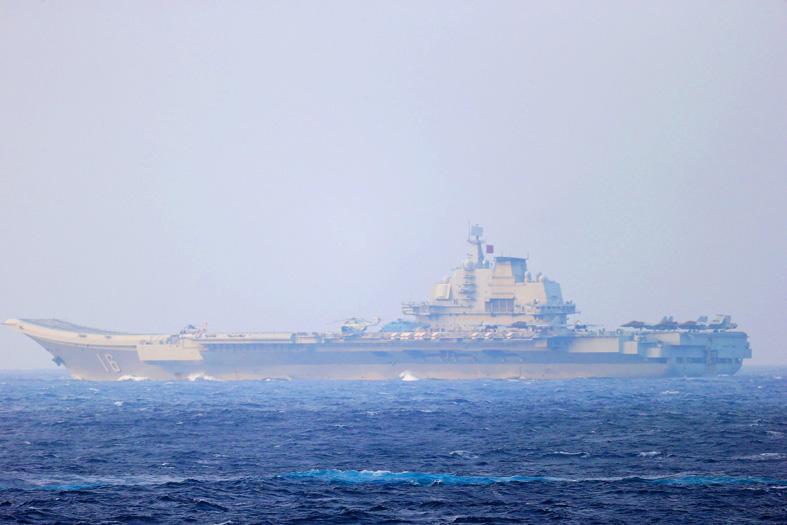
Photo: Reuters
The statement came after the Ministry of National Defense earlier on Monday issued a statement regarding a rise in the number of incursions by Chinese jets into its air defense identification zone (ADIZ) over the past few months.
The ministry said it had a “full grasp” of the situation in the air and at sea surrounding Taiwan and that it was “appropriately handling” the matter.
Beijing uses such methods to express its opposition to developments involving Taiwan, especially those with sovereignty implications.
Last week, when US Ambassador to Palau John Hennessey-Niland visited Taiwan along with Palauan President Surangel Whipps Jr, Beijing sent 10 planes into the nation’s ADIZ.
Tokyo has also voiced its concern over increased Chinese military activity, with Japanese Minister of Defense Nobuo Kishi yesterday telling NHK that Japan aims to closely monitor Chinese naval and air operations in the region.
The Japanese Ministry of Defense said on Sunday that the Liaoning, accompanied by five escort ships, had transited the Miyako Strait between Saturday and Sunday on their way to the Pacific.
Kishi said that he hoped that Taiwan and China could settle their differences in a peaceful manner.
A White House spokesperson last month said that Washington would continue to assist Taiwan with means to sufficiently defend itself.
In its most recent foreign affairs and national defense talks with Japan on March 16, the US affirmed the importance of stability and peace across the Taiwan Strait.
While pledging to continue the sale of upgraded warplanes, missiles and other defensive hardware to Taiwan, the US Navy yesterday said that its Theodore Roosevelt carrier strike group had entered the South China Sea on Saturday to conduct routine operations.
It is the second time the strike group has entered the area this year as part of the US 7th Fleet’s 2021 area of operations deployment.
The 7th Fleet said that the strike group would “conduct fixed and rotary-wing flight operations, maritime strike exercises, anti-submarine operations, coordinated tactical training and more” during its deployment.
Additional reporting by AP and CNA
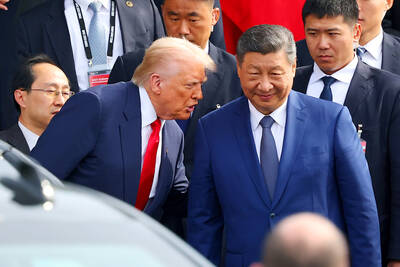
UKRAINE, NVIDIA: The US leader said the subject of Russia’s war had come up ‘very strongly,’ while Jenson Huang was hoping that the conversation was good Chinese President Xi Jinping (習近平) and US President Donald Trump had differing takes following their meeting in Busan, South Korea, yesterday. Xi said that the two sides should complete follow-up work as soon as possible to deliver tangible results that would provide “peace of mind” to China, the US and the rest of the world, while Trump hailed the “great success” of the talks. The two discussed trade, including a deal to reduce tariffs slapped on China for its role in the fentanyl trade, as well as cooperation in ending the war in Ukraine, among other issues, but they did not mention
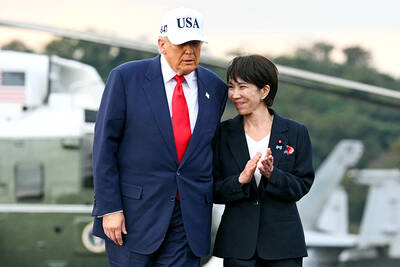
Japanese Prime Minister Sanae Takaichi yesterday lavished US President Donald Trump with praise and vows of a “golden age” of ties on his visit to Tokyo, before inking a deal with Washington aimed at securing critical minerals. Takaichi — Japan’s first female prime minister — pulled out all the stops for Trump in her opening test on the international stage and even announced that she would nominate him for a Nobel Peace Prize, the White House said. Trump has become increasingly focused on the Nobel since his return to power in January and claims to have ended several conflicts around the world,
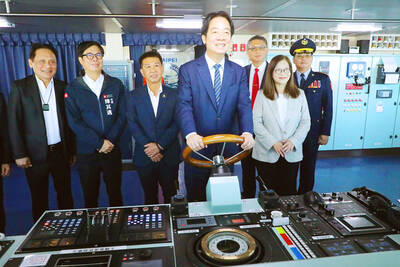
CALL FOR SUPPORT: President William Lai called on lawmakers across party lines to ensure the livelihood of Taiwanese and that national security is protected President William Lai (賴清德) yesterday called for bipartisan support for Taiwan’s investment in self-defense capabilities at the christening and launch of two coast guard vessels at CSBC Corp, Taiwan’s (台灣國際造船) shipyard in Kaohsiung. The Taipei (台北) is the fourth and final ship of the Chiayi-class offshore patrol vessels, and the Siraya (西拉雅) is the Coast Guard Administration’s (CGA) first-ever ocean patrol vessel, the government said. The Taipei is the fourth and final ship of the Chiayi-class offshore patrol vessels with a displacement of about 4,000 tonnes, Lai said. This ship class was ordered as a result of former president Tsai Ing-wen’s (蔡英文) 2018
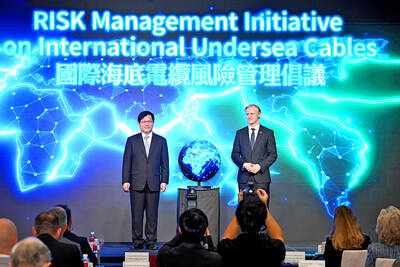
GLOBAL PROJECT: Underseas cables ‘are the nervous system of democratic connectivity,’ which is under stress, Member of the European Parliament Rihards Kols said The government yesterday launched an initiative to promote global cooperation on improved security of undersea cables, following reported disruptions of such cables near Taiwan and around the world. The Management Initiative on International Undersea Cables aims to “bring together stakeholders, align standards, promote best practices and turn shared concerns into beneficial cooperation,” Minister of Foreign Affairs Lin Chia-lung (林佳龍) said at a seminar in Taipei. The project would be known as “RISK,” an acronym for risk mitigation, information sharing, systemic reform and knowledge building, he said at the seminar, titled “Taiwan-Europe Subsea Cable Security Cooperation Forum.” Taiwan sits at a vital junction on